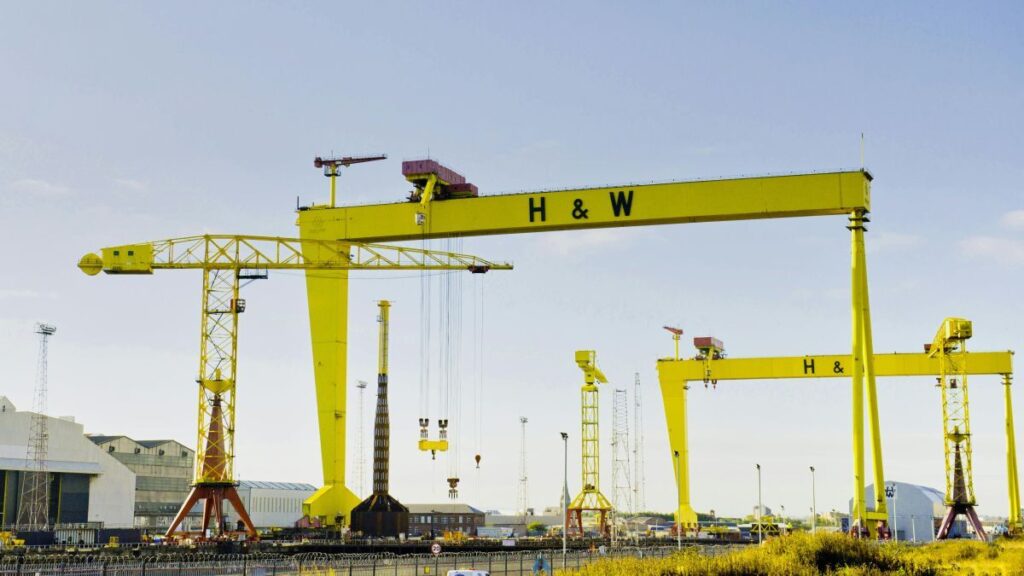Following the annual BTA Conference, Edwin Lampert from Riviera Maritime wrote an article on the presentation by Belfast Harbour Commissioners CEO, Joe O’Neil. The BTA extends its gratitude to the speakers and Edwin for their expertise and professionalism, which contributed to the success of the conference

Belfast Harbour is resurrecting its shipbuilding heritage while transforming 2,000 acres of land and ranks as one of the UK’s largest single port landholdings
“We’re not just reimagining our past; we’re engineering our future with the same bold vision that built the Titanic,” said Belfast Harbour chief executive Joe O’Neill at this year’s annual BTA Conference. “This isn’t about nostalgia; it’s about leveraging our maritime DNA to create a sustainable economic engine for Northern Ireland.”
The Trust Port, which handles more than 24M tonnes of goods annually as the UK’s ninth-largest port by volume, has engineered a remarkable evolution beyond traditional maritime operations. While its core business remains in shipping, Belfast Harbour has systematically converted surplus port acreage into a dynamic economic zone now home to more than 760 businesses, spanning aerospace manufacturing, maritime and logistics partners, film studios, science parks and residential developments.
Three strategic initiatives now drive Belfast’s maritime resurgence. The port has grown from zero cruise calls to almost 150 visits annually, with ongoing substantial infrastructure investments firmly establishing Belfast as a turnaround port rather than merely a port of call. This shift represents a fundamental upgrade from handling thousands, to hundreds of thousands, of passengers, requiring enhanced embarkation facilities and terminal infrastructure.
The most dramatic development comes in shipbuilding, where Harland & Wolff’s revival under new ownership has secured contracts for three Fleet Solid Support vessels from 2026-2031, positioning Belfast as one of three cornerstones in the UK’s national shipbuilding strategy. This remarkable turnaround follows the industry’s extended decline that culminated in the last shipyard’s closure in 2001.
Complementing traditional shipbuilding is Artemis Technologies’ advanced manufacturing facility, producing zero-emissions vessels with technology transferred from America’s Cup racing. The operation now employs over 200 staff and has begun commercial production of foiling workboats that will operate a trial service between Bangor and Belfast by year-end.
Belfast’s energy sector strategy demonstrates similar foresight. The port invested £50M (US$67M) in 2012 to establish the UK and Ireland’s first dedicated offshore wind terminal, serving Walney and Burbo Bank windfarms. Continuing to invest and creating more offshore wind capacity is a newly announced £90M deepwater quay development that will serve both cruise tourism and floating offshore wind assembly.
The port’s sustainability initiatives mirror this forward-looking approach, with Belfast Harbour expected to reach net zero in its direct operations well ahead of its 2030 target. Current measures include introducing new electric vehicles across its fleet and the increased use of low-carbon alternative fuels including hydrotreated vegetable oil in its pilot boats and plant machinery.
This comprehensive transformation builds upon Belfast Harbour’s remarkably engineered foundations. What appears natural is actually the product of extensive land reclamation, with a maintained channel opened by Queen Victoria in 1849 and additional channel openings in 1889 and 1930, creating the modern port infrastructure from the historic 1847 Trust Port framework.
The article can be found on Riviera’s website here – Riviera – News Content Hub – Shipbuilding rebirth anchors Belfast Harbour’s bid to lead UK maritime renaissance
With gratitude to Edwin Lampert and Riviera for granting permission to the BTA to publish the article.


